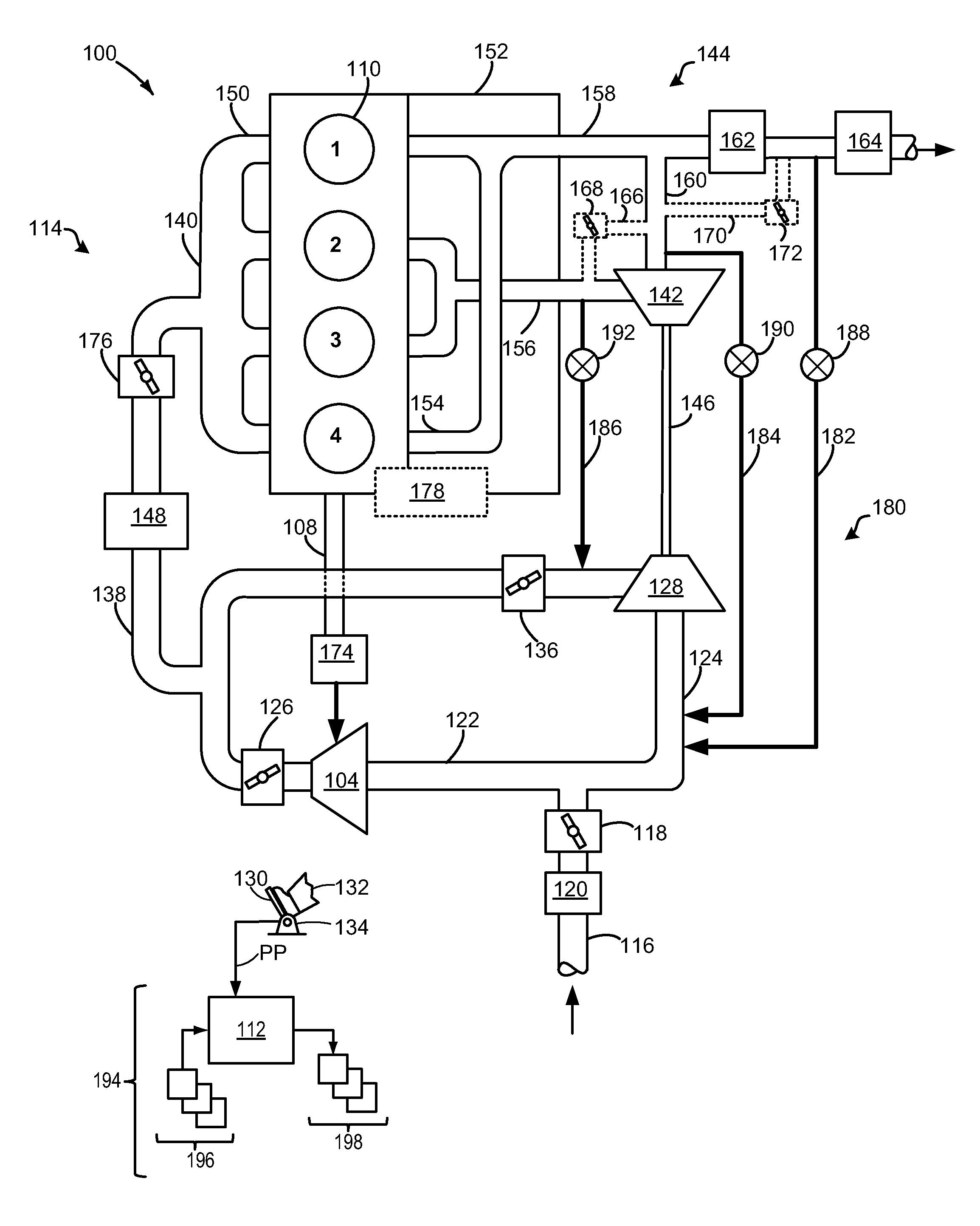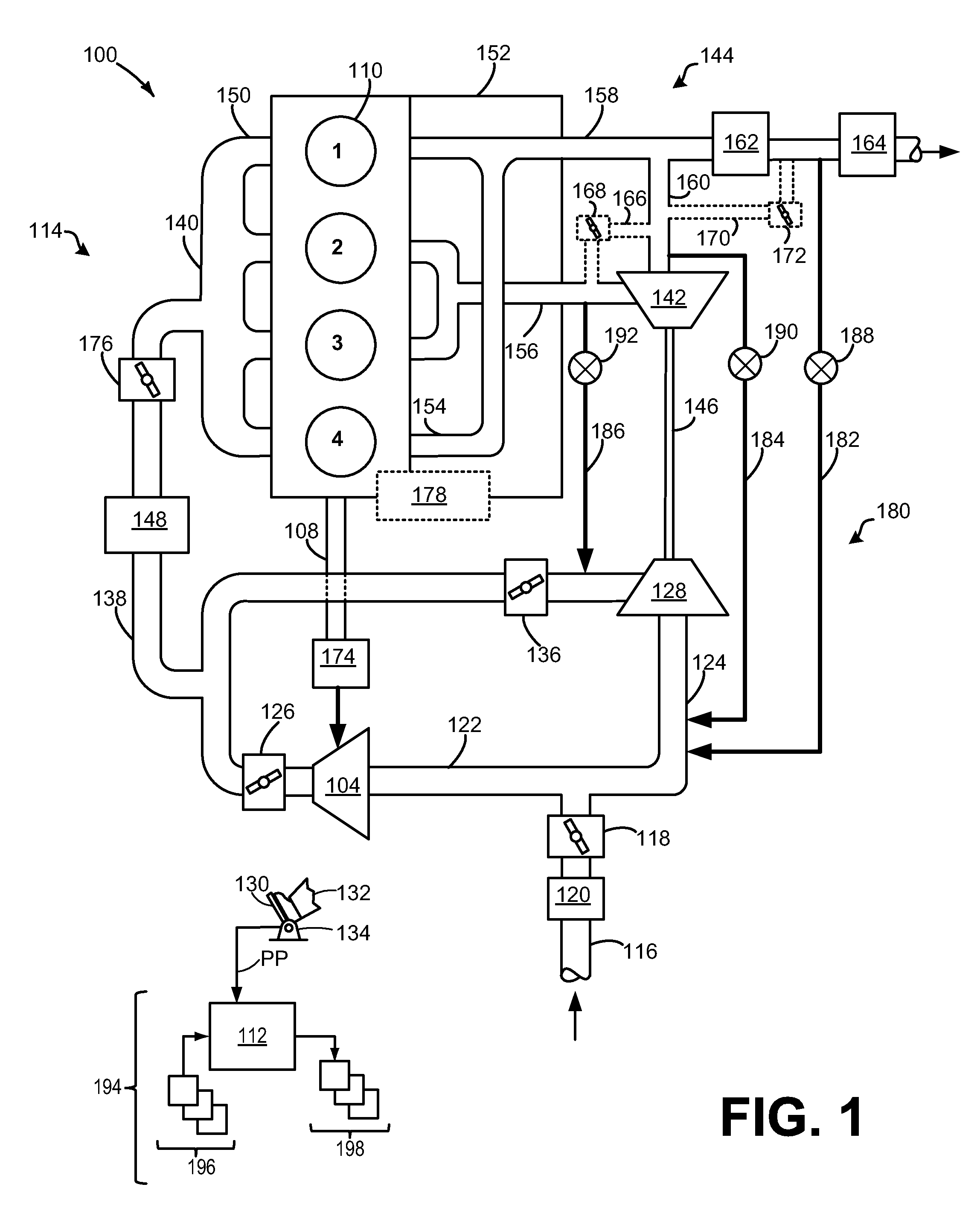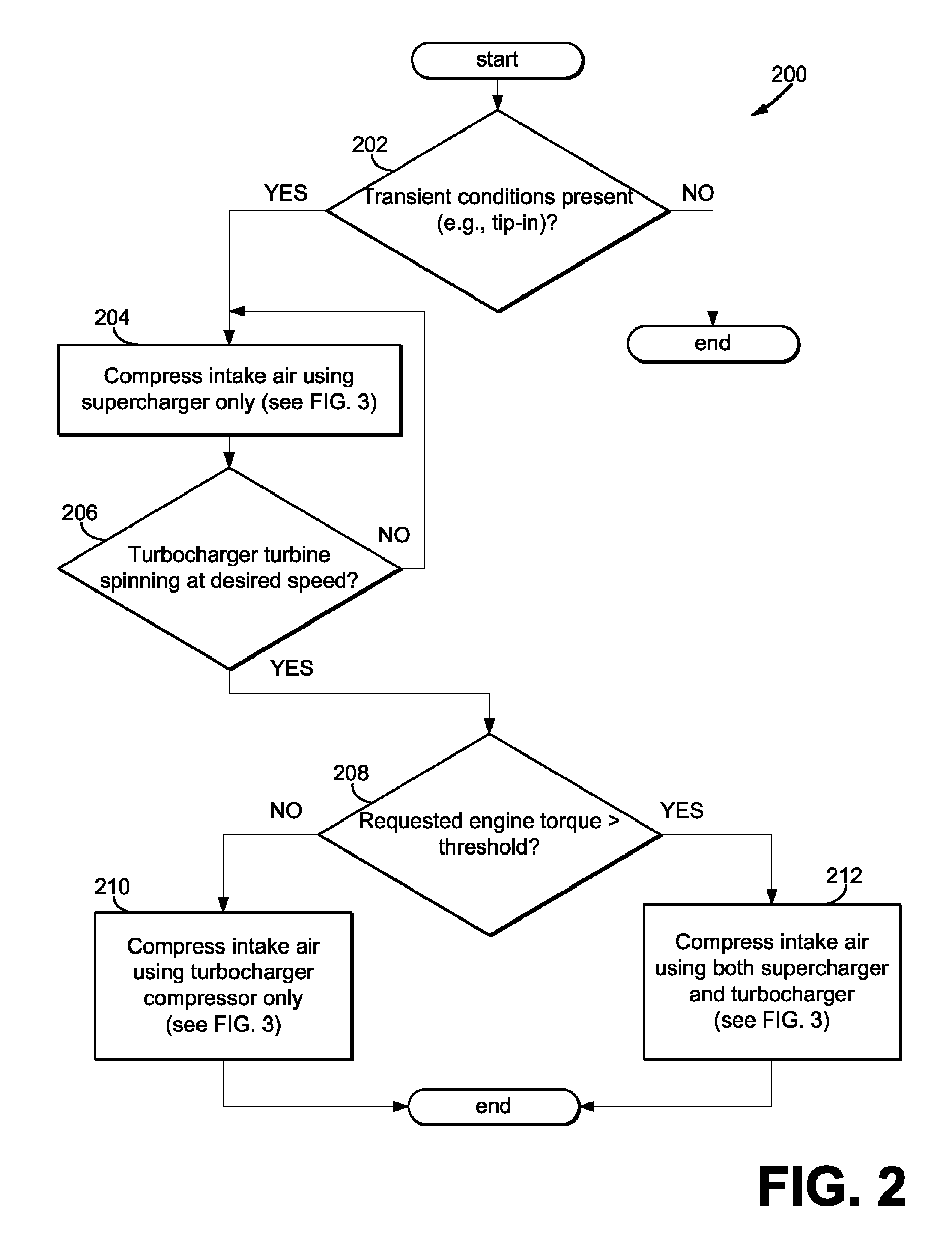Twin independent boosted I4 engine
a technology of boosted i4 and twin independent, which is applied in the direction of machines/engines, electrical control, mechanical equipment, etc., can solve the problems of affecting combustion, limiting the extent to which the engine can be downsized, and undesirable lag in engine torque output, so as to reduce engine pumping work, increase fuel efficiency, and increase the duration of the camera
- Summary
- Abstract
- Description
- Claims
- Application Information
AI Technical Summary
Benefits of technology
Problems solved by technology
Method used
Image
Examples
Embodiment Construction
[0012]The following description relates to methods and systems for boosting an internal combustion engine via one or both of a supercharger and turbocharger. As shown in FIG. 1, an engine system may include a supercharger plumbed in parallel with a turbocharger upstream of an intake manifold, with valves for control over the intake air flow path. The system may further include an integrated exhaust manifold in which exhaust from a first subset of cylinders is routed in a first plenum, whereas exhaust from a second subset of cylinders is routed in a second plenum. The first and second plenums may not communicate with each other within the IEM, the first plenum may communicate with a turbine inlet whereas the second plenum may not communicate with first plenum or the turbine inlet. The methods described herein may be used in conjunction with such an engine system to achieve the advantages associated with use of a turbocharger while avoiding disadvantages such as slow transient respons...
PUM
 Login to View More
Login to View More Abstract
Description
Claims
Application Information
 Login to View More
Login to View More - R&D
- Intellectual Property
- Life Sciences
- Materials
- Tech Scout
- Unparalleled Data Quality
- Higher Quality Content
- 60% Fewer Hallucinations
Browse by: Latest US Patents, China's latest patents, Technical Efficacy Thesaurus, Application Domain, Technology Topic, Popular Technical Reports.
© 2025 PatSnap. All rights reserved.Legal|Privacy policy|Modern Slavery Act Transparency Statement|Sitemap|About US| Contact US: help@patsnap.com



